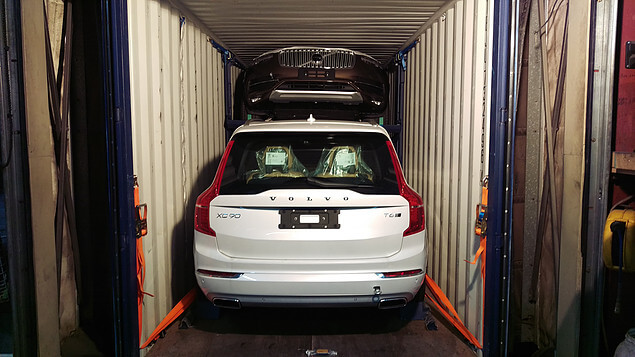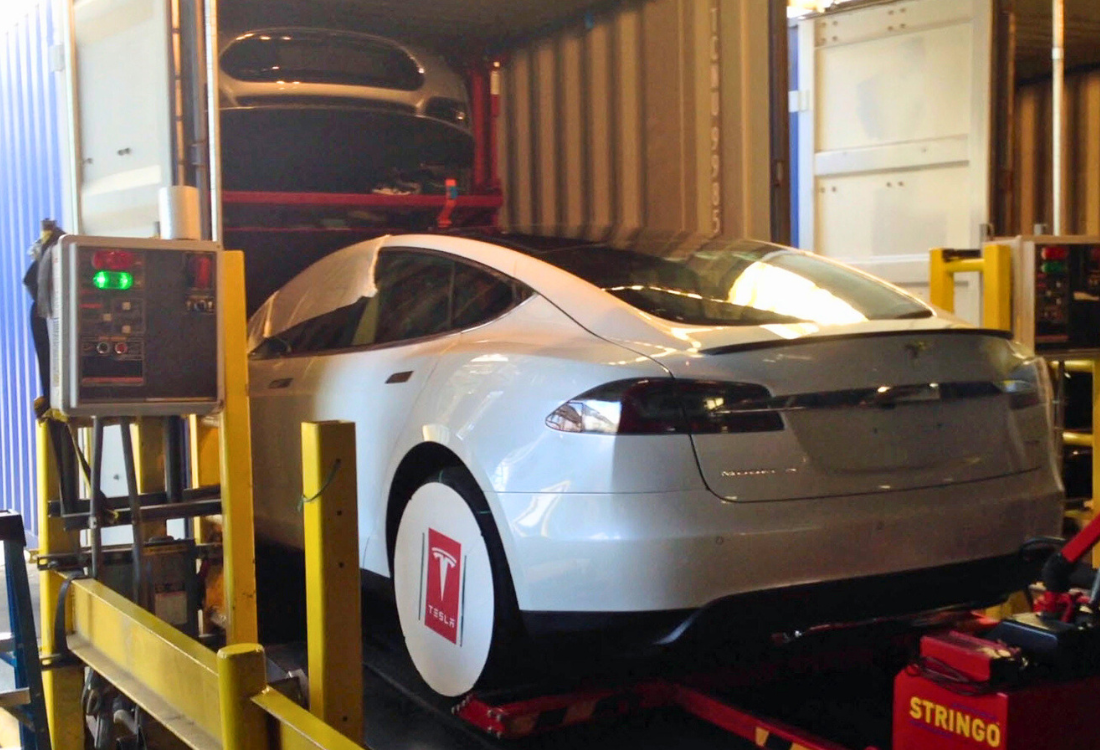
Since the first container ship took to the waves in 1956, the global freight industry has been transformed. Often credited as being one of the most important inventions of the twentieth century, the humble corrugated box – or ‘intermodal freight container’ – has become the friendly, reliable, postman for anything relating to cargo. Accessible, efficient, cost-effective, and reliable, container transport now represents 90% of the global goods trade.
Vehicles, alas, have long been excluded a ticket to this increasingly popular club. Containers, after all, achieve their efficiency by stacking goods in a logical, secure way.
And that, as everybody knows, is simply impossible with cars.
Which is, of course, complete nonsense. All that is required is a strong, force-absorbing, safe racking system. If containers are one of the greatest inventions of the twentieth century, R-Raks might just be one of the best of the twenty-first.
The Cost
When a device such as an R-Rak is used, containerisation immediately becomes cost-effective. This is because the container capacity is doubled. When trucking charges and handling charges are taken into account, these figures quickly start to add up to long-term, cumulative savings.
A prohibitive cost of yesteryear has been the single-use lifespan of racking systems. Innovative, reusable racks are a one-time investment, and can be used indefinitely. As such, the savings are passed on with each shipment.
Containers Utilise The Most Efficient Transport Network
Also related to saving money, containerisation is already the most efficient and cost-effective way of undertaking the lengthy journeys demanded by the automotive industry.
The globalised world is primed for containerisation. It is a booming service that has only been made possible by the fact that the container industry has focused upon financial efficiency, time efficiency, and reliability.
With re-usable racking systems, these benefits can now be offered to vehicle manufacturers.
It’s Safer, With Easier Insurance Premiums
With some common RORO routes requiring up to six transfers, getting a vehicle from Europe to Asia involves multiple points of risk. These are mostly due to human error.
Stories guaranteed to bring a tear to the eye of claimants and insurers alike show that whether by road, rail, or sea, transporting vehicles without proper packaging is fraught with opportunities for disaster. Delays, weather, paperwork… it can all add up to a stressful experience.
Containers provide an extra layer of protection between the goods, the elements, and human accidents, something that insurers approve of.
Containerisation Is Good For CSR, And May Render Other Shipping Obsolete
3% of greenhouse gas is caused by shipping. With carbon footprints and CSR becoming increasingly legislated, environmental innovators have focused upon making container transport more sustainable. Ships are now facing hefty fines if they are not using expensive, cleaner fuels. Technological change to reduce fuel consumption is a major area of development.
It’s expensive, but legally necessary. Only container ships, whose business strategies and efficiency mean that these costs are not prohibitive, are able to manage to survive this seismic organisational shift without having to pass the costs on to the client.
Dominating the global freight transport network, it is also container ships that have the undivided focus of the engineers and leaders who are working to solve the problem, meaning that other forms of shipping are being left out of the equation.
The Answer
The answer to the greatest benefits of containerisation can be summed up very simply: for the same reasons that 90% of the world uses the container option. The method is reliable, efficient, cost-effective, predictable, safe and well-ironed. In the sixty years since it was first invented, containerisation has focused upon becoming ever more efficient. Now, with the advent of our unique R-Rak racking system, this option is finally open for the transportation of vehicles.














